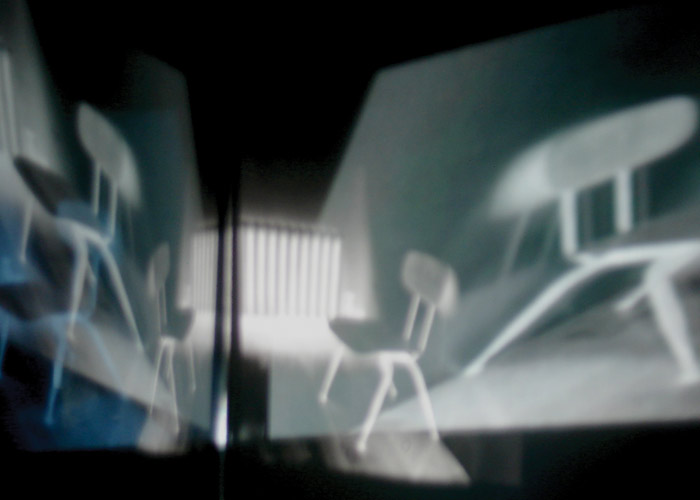Leah Oates: How did you become an artist and did you know early on that you would be in the arts or did you begin as something else? Were there other artists in your family?
Kristine Marx: My earliest memories are of painting and drawing, so I always made art. My parents were very encouraging. I went to a liberal arts college to pursue many interests, but eventually returned to a studio practice.
The only other artist in my family was my great aunt. I never met her, but one of her paintings of a swan on a lake hung over her sister’s fireplace. It was magical to me as a child.
LO: What are the themes of your work and what inspires you?
KM: The major themes in my work have to do with temporal and spatial experiences of the body that cross over into a psychological engagement. I am interested in how we construct past experiences in the present and perceptions of dislocation and connection.
LO: Did you begin as a video artist? One sees painting, drawing, and photographic references when viewing your videos. Please tell us more.
KM: I make videos, but I also paint and draw. I work on the videos as if they were paintings and the paintings as if they were videos, or a part of a longer narrative over time. The ideas in my work are the same regardless of medium, so I can freely move back and forth.
LO: What is your working process? Each artist is so different in how they approach their work. How do you approach the creation of your work? Do you plan things out or play in the studio?
KM: When I begin a new phase of making work, I experiment in the studio until some theme begins to reveal itself. I then focus on this theme until its internal logic builds into a body of work. I feel it’s akin to asking a question and then letting the answer take its time to unfold. I make art because I enjoy this process.
LO: Why do you think art is important for the world and why is it important for you as an artist?
KM: I am an artist because making things is the way I process and understand the world around me. It’s like thinking with my hands.
Art is important because it performs the double task of reflecting culture while pointing beyond it. Art simultaneously embraces and critiques culture.
LO: What advice would you give other artists who are emerging?
KM: Do what you love. If you don’t love what you are doing, it’s not worth your time. And protect your solitude.
LO: Please talk about upcoming bodies of work, shows etc. that you have coming up.
KM: I just returned from a two and a half month research trip in Japan in preparation for a collaborative sound/video project with composer Akemi Naito. The project is based on Kobo Abe’s 1962 novel “The Woman in the Dunes”. The music is scored for percussion and the eighteen minute video is made up of stop-motion animation. Abe’s story is a post-war Sisyphean tale that I think still resonates today. The DVD is planned for release next year.
























